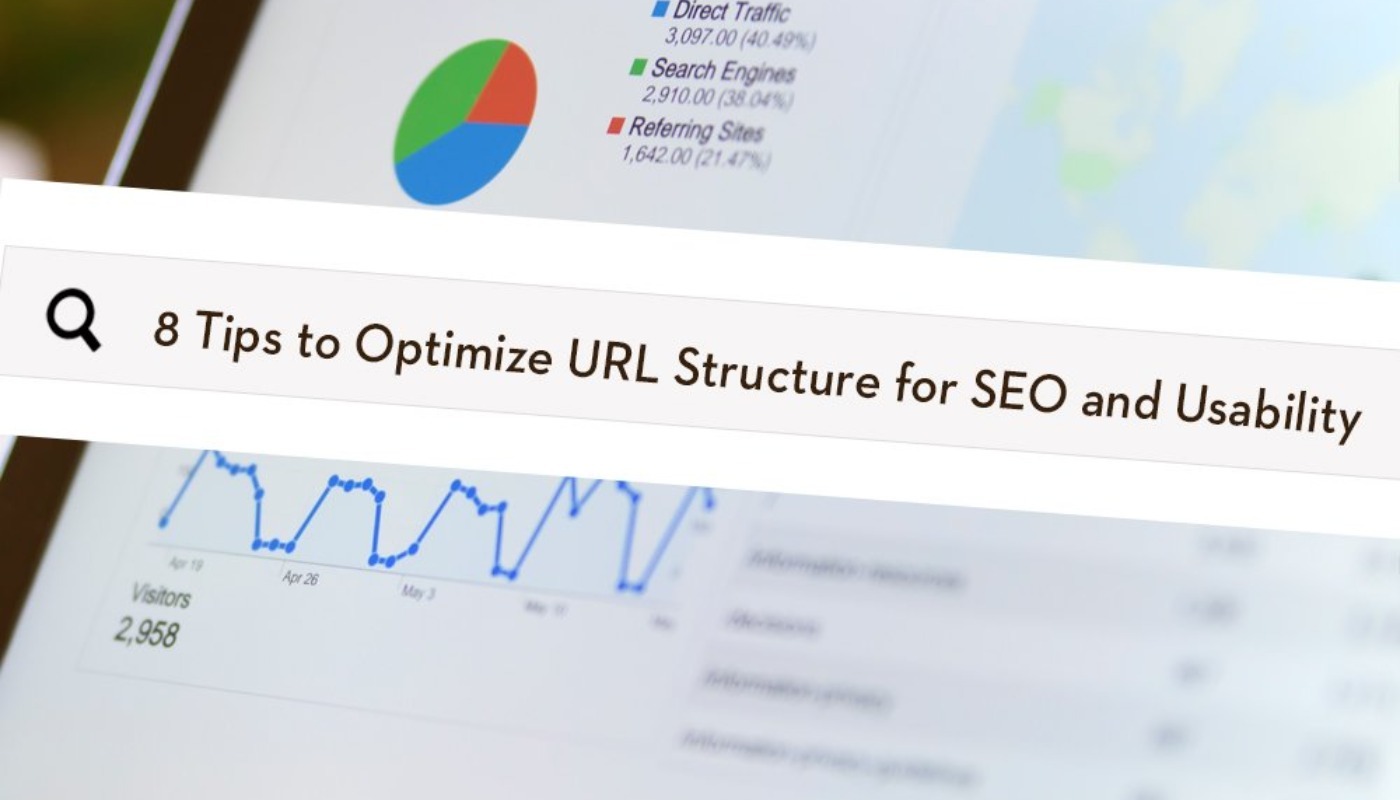

8 TIPS TO OPTIMIZE URL STRUCTURE FOR SEO AND USABILITY
December 5, 2016 by Carly Seitz
Many questions often arise when it comes to best practices for URL structure. In order to answer the most common questions, we decided to compile a list of tips to help you optimize your URLs. These tips relate not just to SEO, but also to usability.
1. Create subdirectories/subfolders rather than subdomains
Your pages will rank higher if they’re contained on a subdirectory (aka subfolder) as opposed to a subdomain. For those of you who aren’t aware of the difference, a subdomain is something along the lines of blog.website.com, whereas a subdirectory/subfolder would be website.com/blog.
You’ll want to be careful when moving from a subdomain to a subdirectory, as you will want to ensure your pages redirect properly. Thankfully, there is an easy way to automate the redirects via .htaccess, so long as the rest of your URL structure doesn’t change. Check out Pixert’s tutorial to learn this process.
2. Make your URLs short
If you remember nothing else from this post, at least remember this point: shorter URLs are better from an SEO and usability standpoint. Quick Sprout found that the highest-ranking URLs on SERPs had between 35 and 40 characters. However, it appears for things like blog posts and news articles, longer URLs are okay. You still want to keep them short, but looking at Google itself, it appears keeping your URLs under 95 characters proves ideal.
3. Take out stop words
Here’s the thing about stop words (i.e. the, or, and, etc.): they won’t necessarily hurt you directly, but they don’t help you and they could hurt you indirectly. Including stop words makes your URLs longer, which, as already stated, you don’t want. They won’t help you, because generic terms don’t help in searches.
4. Use lowercase characters in your URL structure
Believe it or not, URLs are case sensitive. If someone were to type in your URL with all lowercase letters and you had your URL set up with uppercase, or vice versa, they wouldn’t be able to reach your site. Luckily, there are ways to automate the process of setting up redirects to change any uppercase URLs to lowercase.
5. Don’t worry so much about the number of subfolders you have
Here’s the thing about subfolders: the more you have, the longer your URLs are likely to be, which you want to avoid. However, they do not directly affect your rankings in search engines. In fact, Quick Sprout found that several top-10 listings for 1,000 keywords which were tested have up to 12 subfolders.
When it comes to things like blog posts, having subfolders for dates can be very helpful when setting up redirects when your URLs change. For example, if you change a URL when you change the name of an article, you should set up a redirect. Having the date can help you figure out what post the old URL relates to. Some content management systems (CMS) like WordPress may change a URL automatically when you do this.
Just remember that although many subfolders won’t affect search rankings, it is best from a usability standpoint to make sure the subfolders you include make sense to your site’s users.
6. Use hyphens rather than underscores to separate words
Search engines don’t treat underscores like spaces the way they treat dashes. If you use hyphens, Google will treat each word as separate. This will ensure your URLs help your SEO if they include keywords. However, when you use underscores, Google treats everything as one word. For instance, if you have a URL like website.com/one-two-three, Google will read the path as one two three. But if you set up a URL as website.com/one_two_three, Google will interpret the path as onetwothree. Users would have to include underscores in their queries for your URLs with underscores to help you rank.
Now, Google will not penalize you for using underscores, but using underscores won’t help you, either. This probably explains why Google recommends using hyphens over underscores.
7. Use keywords, but in a way that makes sense
While as implied in #6 - keywords in URLs can help you - it is important to know that they can also hurt you. If you overstuff keywords into your URLs, it won’t look natural and search engines may look at them as spammy. Bing published a pretty in-depth article over URL keyword stuffing (KWS) which gives a clearer picture as to what search engines would consider unnatural. Google has also published an article over keyword stuffing in general that does not relate solely to URLs.
8. Avoid dynamic parameters when possible
The idea that Google can’t crawl pages with dynamic URLs is a myth. However, having dynamic URLs will create a much larger number of URLs for Google to index. But websites have crawl budgets, so if you have too many URLs, they won’t all get indexed. For that reason, it is good to avoid dynamic URLs. If you already have them though, Google recommends keeping the URLs dynamic over hiding the parameters to make the them look static.
Other, safe ways exist to ensure Google will not crawl your dynamic URLs. You can read up on what methods Google recommends – as well as what types of things cause problematic parameters – in this guide from Google.
Staying clear of dynamic parameters in your URLs isn’t just something that’s good for SEO. It also ties in with usability, as it makes your paths more readable to humans, and, in turn, more likely to be shared.
Wrapping Up
Keep in mind that some of these tips will be best reserved for future URLs you create. Sometimes, changing your URL structure and redirecting URLs requires a lengthy, complicated process. And sometimes, it does not warrant the amount of time it would take to do so. However, it is nice to know that making 301 or other 30x redirects will no longer affect your PageRank, whereas it used to result in about a 15% decrease. This is something that only happened within the last few months. Google trends analyst Gary Illyes announced it on Twitter back in July.
We’ve given you a lot of information to make you aware of the best practices for URL structure, but these tips can be difficult to implement. If you’d like our help, contact us and we can come up with a plan tailored for you.
Explore with AI:
These links open AI platforms with pre-written prompts about this page.





